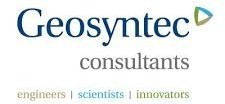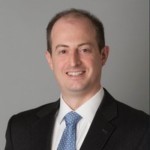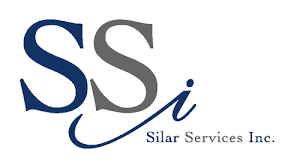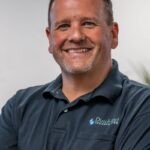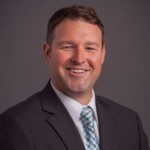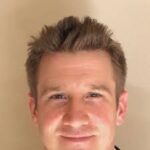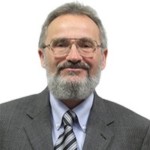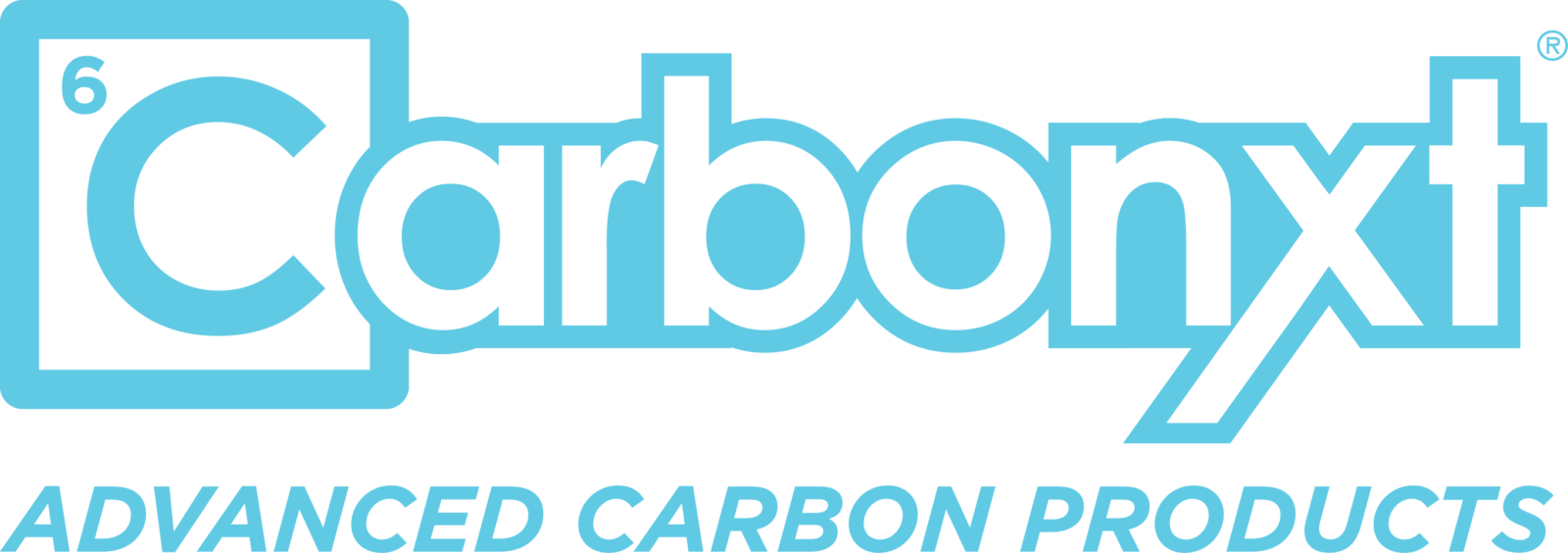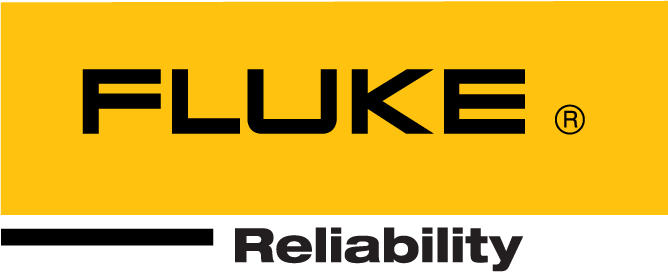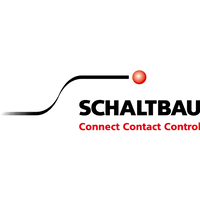EUECVirtual PROGRAM
October 26-28, 2021
SESSION H1. COAL COMBUSTION CCR, CCP, ASH, FGD, ELG OCTOBER 26, 2021
MODERATOR
Prabhu Dayal is Chairman of EUEC, the 24th Annual, Energy Utility Environment Conference and Expo.
EXPERIENCE:
Tucson Electric Power Company, Director of Corporate Environmental Compliance for 15 years.
El Paso Natural Gas Company, Senior Environmental Engineer for 7 years.
CTrade, Founder and CEO, an international waste-to-energy company with nine renewable energy projects developed in Philippines, and India. The Clean Development Mechanism (CDM) projects in Cebu Philippines received 60,000 CERs per year (Certified Emission Credits) under Kyoto Protocol for converting waste animal manure to organic fertilizer, biogas and electricity.
EDUCATION:
PhD, Soil, Water & Environmental Science, University of Arizona, Tucson, Arizona.
MS, Civil Engineering, University of Texas, El Paso, Texas.
MS, Management Science, Stevens Institute of Technology, New Jersey.
H1.2 Case Study – Characterization and Remediation of CCR-Impacted Groundwater
(8:20 am – 8:40 am PDT)
(11:20 -11:40 am EST)
H2.2 Case Study - Characterization and Remediation of CCR-Impacted Groundwater
High resolution site characterization (HRSC) of groundwater downgradient of a suspected CCR impoundment release was performed using multiple tools to evaluate CCR groundwater impacts and serve as the basis for selecting and designing a groundwater remedy. HRSC at this CCR facility included: 1) surface geophysical surveys using electrical resistivity imaging (ERI) around CCR impoundments to evaluate zones of elevated specific conductivity as an indicator of CCR groundwater impacts; and 2) direct push technology (DPT) investigations for collection of relative hydraulic conductivity, real-time vertical profiles of electrical conductivity (EC), and depth-discreet groundwater samples. Once a conceptual site model was developed, a groundwater extraction system was designed, constructed, and brought online to address identified CCR impacts. The remedial system included installation of nine extraction wells with a total flow rate up to 250 gallons per minute. Due to concentrations of groundwater constituents, corrosion/scaling issues were predicted by geochemical modeling and subsequently observed during system operation. The potential for scaling was addressed through system design and as part of routine system operation/maintenance. Since system startup, routine groundwater monitoring indicates substantial declines in groundwater concentrations.
Co-Author: Lane Dorman, Geosyntec
H1.3 Characterization of CCP Impoundments to Determine Beneficial Uses
(8:40 am – 9 am PDT)
(11:40 am – 12 pm EST)
H2.5 Characterization of CCP Impoundments to Determine Beneficial Uses
The continuing decline of coal utilization for energy production has resulted in a limited and declining supply of CCPs for beneficial use applications. In order to meet growing market demand and mitigate environmental risk, harvesting of impounded CCPs for beneficial use is becoming an increasingly desired solution. In order to fully evaluate the risks, beneficiation opportunities, and economic value of CCP ponds and landfills, the impoundments must be strategically characterized before harvesting. In this presentation, the methods by which a CCP impoundment can be characterized will be reviewed. In general, one of the first steps is engineering a sample plan informed by pond or landfill profile and any known historical data related to the development of the site. Test methods are then selected for the samples in order to evaluate material characteristics that impact specific beneficial use opportunities. Impoundment profiles are then generated to give a comprehensive understanding of the in-situ CCP material.
Co-Author: Ross Gorman, SEFA Group
H1.5 Practical CCR Management Using Lime
(9:20 am – 9:40 am PDT)
(11:20 – 11:40 am EST)
H2.6 Practical CCR Management Using Lime
Lime is an increasingly popular solution for efficient coal combustion residue (CCR) management and closure programs. This presentation highlights the ability of Lhoist products to chemically alter the structure of ponded ash for robust solidification. More specifically, modest quantities of lime predictably render the ash more friable, forgiving, and easier to handle using standard equipment. The flexibility that lime treatment offers over competitive systems, allows contractors to reliably meet project deadlines and reduce costs. Additionally, closure-in-place projects using lime stabilization are viable options and an area where Lhoist has over 50 years’ experience in stabilization of pozzolanic materials.
Co-Author: Kevin Ingram, Lhoist North America
H1.1 Low Capital Cost FGD ELG Compliance Strategy
(8:00 am – 8:20 am PDT)
(11 am – 11:20 am EST)
H2.1 Low Capital Cost FGD ELG Compliance Strategy
“Treat-and-Discharge” is the most common form of Flue Gas Desulfurization (FGD) wastewater disposal. This method may no longer be available to some coal fired power plants due to the recently revised Flue Gas Desulfurization (FGD) Effluent Limitation Guidelines (ELG) regulations. The remaining operating life of many coal fired power plants is now relatively short, therefore, many operators are searching to find FGD ELG compliance strategies that can be instituted without major capital outlays. Softening + membrane concentration + solidification is a low capital cost approach being considered by many coal plant operators to comply with the revised FGD ELG regulations. Many coal fired power plants have existing physical / chemical treatment systems installed to precipitate heavy metals. These existing treatment systems can be easily modified to include softening at low cost. The softened FGD wastewater volume can be reduced using membrane technology (ultrafiltration + reverse osmosis). Reverse osmosis (RO) recoveries of 70 to 90% may be achievable resulting in a 3 to 10 times brine volume reduction and thus a proportional decrease in solidification reagent and disposal needs. An added benefit is that the RO permeate can be recycled for plant reuse. Solidification consists of readily available, off-the-shelf equipment including silos, mixers, and conveyors.
H3.2 Reduce CO2 Capture Footprint and Costs Through Process Intensification
(1:20 pm – 1:40 pm PDT)
(4:20 pm – 4:40 pm EST)
H4.2 Reduce CO2 Capture Footprint and Costs Through Process Intensification
The major hurdles to adoption of CO2 capture from power stations are the equipment size and capital cost of the carbon capture system. Carbon Clean is developing a compact integrated carbon capture system that uses rotating packed bed (RPB) units to drive down CapEx and footprint. This presentation discusses the equipment size reduction anticipated with RPB-based process intensification. Also, a rough order-of-magnitude economic analysis will be provided to compare the expected capital and operating costs reductions for the intensified process versus a benchmark monoethanolamine (MEA) based static system.
Co-Author: Will Shimer, Carbon Clean
SESSION H2. CCR MANAGEMENT & GROUNDWATER REMEDIATION OCTOBER 26, 2021
H2.1 In Situ Flushing – A Counter-Intuitive Groundwater Remedy at CCR Sites
(10:30 am – 10:50 am PDT)
(1:30 pm – 11:50 pm EST)
H3.1 In Situ Flushing - A Counter-Intuitive Groundwater Remedy at CCR Sites
Many coal combustion residuals (CCR) disposal units regulated by the Federal CCR Rule will require Corrective Actions as statistically significant levels (SSLs) of Appendix IV constituents are detected above groundwater protective standards (GWPS) during Assessment Monitoring. The CCR Rule imposes stringent performance standards for Corrective Actions with the point of compliance (POC) at the edge of the CCR unit. Pump and treat (P&T) technologies might be necessary, or already in place, at some of these facilities. However, traditional P&T technologies are limited in their capacity to address unsaturated zones and lower permeability areas containing residual pore water with dissolved and sorbed constituent mass, such as between capped CCR units and the lowered groundwater table induced by pumping. When P&T systems are shut off and the groundwater table rebounds, these unsaturated zones and lower permeability areas may act as secondary sources of constituents to groundwater which could lead to detections above GWPS and additional Corrective Actions. Unlike traditional P&T technologies, in situ flushing targets unsaturated zones and lower permeability areas with clean water injection wells that mobilize residual pore water with constituent mass toward capture wells. In situ flushing has recently been embraced at a large CCR disposal site to mitigate unsaturated zones and lower permeability areas below CCR units from acting as secondary sources after P&T systems are shut off.
H 2.2 Geochemical Modeling for CCR Remedy Selection
(10:50 – 11:10 am PDT)
(1:50 pm – 2:10 pm EST)
H3.3 Geochemical Modeling for Defensible CCR Remedy Selection
Power clients across the US are challenged to properly weigh corrective measures for CCR management. A favored approach among stakeholders is “clean closure”, i.e. source removal. However, the long-term environmental consequences of CCR removal are rarely investigated. Here, we present a case-study integrating groundwater and geochemical modeling at multiple CCR sites. Multiple models were developed for a variety of corrective actions, including natural attenuation, semi-permeable caps, barrier wall emplacement, geochemical conditioning, and source removal. The modeling results were used to evaluate the long-term potential for success and identify the environmental consequences of each corrective measure, including CCR removal.
Co-Author: Rens Verburg, Golder Associates
H2.3 Insurance Coverage for CCR Investigation and Remediation
(11:10 am – 11: 30 am PDT)
(2:10 pm – 2:30 pm EST)
H3.4 Insurance Coverage for CCR Investigation and Remediation Costs
Insurance policies may provide utilities with significant funding for CCR-related investigation and remediation costs. In particular, a utility’s historical liability policies purchased decades ago may pay for the property damage (including contamination of soil and groundwater) that has occurred. Our presentation will identify key issues relating to insurance recovery for CCRs, answer common questions, and offer tips from our decades of experience helping utilities secure coverage for environmental claims.
Co-Author: Michael Lynch, K&L Gates
H2.4 Performance of Engineered Turf Cover Under Extreme Weather Conditions
(11:30 am – 11:50 am PDT)
(2:20 pm – 2:50 pm EST)
H3.5 Performance of Engineered Turf Cover Under Extreme Weather Conditions
The engineered turf cover system uses an engineered synthetic turf infilled with sand to cover and protect the underlying geomembrane. Since the first installation in 2009, the engineered turf cover system has been increasingly used for closure of MSW and industrial landfills and CCR impoundments. This presentation starts with a brief introduction of the system components and functions. The remainder of the presentation is focused on the performance of the cover system related to soil erosion, water quality, and geotechnical stability under extreme weather conditions (e.g., hurricanes, storms, high winds and freezing temperatures) through documented laboratory test results and field observations.
H3.1 In Situ Impoundment Closure and Groundwater Corrective Action Technology
(1:00 pm – 1:20 pm PDT)
(4 pm – 4:20 pm EST)
H4.1 In Situ Impoundment Closure and Groundwater Corrective Action Technology
An in-situ closure method utilizing discrete in situ solidification (ISS) will be presented. ISS when utilizing this method will provide an environmentally sound and cost-effective closure/corrective action of CCP impoundments as compared to other alternatives. This technology eliminates leaching and increases geotechnical stability reducing long term risk. The ash is hydraulically isolated from the groundwater by constructing a horizontal hydraulic barrier at the bottom of the impoundment and a perimeter wall around the impoundment thereby eliminating contact with groundwater. These demonstrated ISS applications will also enhance geotechnical stability and reduce slope failure. Advantages of this closure/remediation method will be presented.
Co-Author: John Magee, Silar Services, Inc.
H2.6 CCR beneficiation -fly ash to produce eco-friendly low-cost durable concrete
(8:40 am - 9 am PDT)
(11:40 am - 12 pm EST)
H2.6 CCR beneficiation -fly ash to produce eco-friendly low-cost durable concrete
The concrete industry is facing a shortage of low-cost pozzolanic materials whereas large quantities of coal combustion residuals (CCR) remain underutilized. A significant underutilized CCR is spray dry absorber ash (SDA) with high levels of calcium sulfite/sulfate that have historically posed concerns to concrete structures due to potential sulfate attack. This presentation discusses an innovative approach that incorporates SDA with portland cement and harvested fly ash to produce eco-friendly low-cost durable concrete. Benefits include a possible 50 percent reduction in expensive portland cement that is a major contributor to a global CO2 emissions.
Co-Author: Ross Gorman, SEFA Group
TRACK I October 27, 2021
SESSION I1. WASTEWATER TREATMENT, ELG, CCR OCTOBER 27, 2021
I1.1 Beneficial Reuse of Flare Gas for Heavy Oil Produced Water Treatment
(8 am - 8:20 am PDT)
I1.1 Beneficial Reuse of Flare Gas for Heavy Oil Produced Water Treatment
Globally, a tremendous amount of natural gas is flared and wasted as part of oil production. Total US gas flared increased from 165,928 metal-to-metal charge transfer (MMct) in 2010 to 468,347 MMct in 2018. But what if that flare could be put to use as part of the produced water treatment process?
This presentation will review findings from a recent pilot in the Western United States where a novel thermal concentration technology successfully treated produced water on site at a heavy oil production well. The concentrator reduced the volume of produced water by 98% and thus enabled a drastic reduction in disposal costs for the operator. The final concentrate contained 48.3% solids by weight and almost 490,000 mg/L total dissolved solids (TDS) and all of the thermal energy for the treatment process was generated by flaring readily available wellhead gas. Additionally, the process was able to remove 100% of BTEX Compounds.
Co-Author: Ben Laurent, Heartland Water Technology
I1.2 State of the Art Precast Post-Tensioned Concrete for Water & Wastewater Tanks
(8:20 am - 8:40 am PDT)
I1.2 State of the Art Precast Post-Tensioned Concrete for Water & Wastewater Tanks
Precast Prestressed Concrete is becoming a widely utilized option, in lieu of cast-in-place, for all types of water, wastewater, and renewable energy projects. This presentation will focus on how precast tanks are designed, manufactured offsite, and installed at the project site. Case studies showing how this "green" tank construction methodology saved time and money, while providing increased durability, will be highlighted.
Co-Author: Michael O'Brien, Dutchland, Inc.
QUESTIONS
1. What is the life expectancy of precast post-tensioned tanks?
2. How do precast post-tensioned tanks normally compare to the cost of cast-in-place construction?
3. Are there size limitations to this type of construction?
I1.3 Power Up with Data Driven Marketing
(8:40 am - 9 am PDT)
I1.3 Power Up with Data Driven Marketing
Vendors in the EUEC-sphere offer pragmatic answers to challenging power industry challenges, both in fossil and renewable energy power generation.
The U.S. market for power generation and supply is dynamic, complex, and geographically distributed. The challenge is, how do you get your excellent solutions in front of the right prospects at the right time?
Power Up with Market intelligence.
FirmoGraphs supports smart industry leaders who are providing:
-More-accurate options for trace-metal contaminant removal from coal ash pond water
-Innovative soil compaction technologies for safer landfill construction
-More-effective monitoring and instrumentation on combustion sources
-New handling solutions for temporary onsite water management
FirmoGraphs helps organizations find their ideal customers (the needle) in the vast and complex U.S. power market (the haystack). In this presentation, David Cox, FirmoGraphs President will share several real-world, ‘nerd marketing’ examples of how organizations use Business Intelligence to identify and reach the right target accounts.
QUESTIONS
1. Where do you source your data?
2. What states are tracked?
3. How many hours are put into data collection and curation?
I1.4 ELG Update - What Now?
(9 am - 9:20 am PDT)
I1.4 ELG Update - What Now?
The revised draft of the Power Plant ELG rule was issued in November 2019. So, what now. We'll look at what's in the new rule and how compliance options have changed and what options offer promising results.
I1.5 Water and Ash Compliance: What is New this Year?
(9:20 am - 9:40 am PDT)
I1.5 Water and Ash Compliance: What is New this Year?
This presentation will outline the current state of the rules, including a summary of the proposed ELG rule changes from EPA, any additional CCR changes, and an update on state and/or federal CCR programs. It will also highlight CCR/ELG case studies from various regions of the country, challenges being faced in each location, new technologies being implemented for ash conversions, and answers to many of the questions currently being asked by utilities. What is the forecast for more regulatory change and what should we be doing in the interim? What actions must utilities take as they continue forward with CCR groundwater monitoring, corrective action, impoundment closures, discharge permit renewals, ash handling conversions, wastewater treatment projects, and other potential plant modifications?
I1.6 Managing Outage Wash Water Treatment with Existing Infrastructure
(9:40 am - 10 am PDT)
I1.6 Managing Outage Wash Water Treatment with Existing Infrastructure
Revised Effluent Limit Guidelines (ELG) and Coal Combustion Residuals (CCR) regulations are requiring coal fired electric utilities to re-assess all of their wastewater management issues. An area often overlooked is treatment of outage wash water. Traditionally, these waters were simply directed to an ash pond for storage and treatment. With the CCR regulations requiring de-commissioning of these ponds, the outage washwater will be subject to NPDES or State mandated effluent limits prior to discharge. Existing bottom ash dewatering systems present a unique opportunity for utilities to conserve significant capital investment by temporarily repurposing these systems (with equipment and process augmentation) for treatment of outage wash waters. UCC has successfully demonstrated the implementation of BADW as outage wash water treatment systems at a large mid-western utility during its Fall, 2019 outage. UCC met NPDES effluent limits for TSS, iron, copper and pH while successfully managing the various flows generated by outage wash processes. By successfully executing this pilot, UCC has provided a technically sound alternative to investing in a large dedicated outage wash treatment system.
SESSION I2. 316(b), ELG, FGD WASTEWATER MANAGEMENT OCTOBER 27, 2021
I2.1 Design and Operation of Temporary and Permanent Low Volume WWT Systems
(10:30 am - 10:50 am PDT)
I2.1 Design and Operation of Low Volume WWT Systems
With the impending closure of ash ponds and redirection of FGD wastewater to segregated systems, the problem is to how to treat the remaining water flows from a coal fired power plant to effectively meet discharge limits. Commonly called Low Volume Wastewater (LVWW), these flows include coal pile run off, plant sumps, seal water. filter and demineralizer backwash, and various intermittent wash waters. In total, the flows can be quite high approaching 10,000 gpm. Additionally the water quality can be highly variable depending on rain events, process water cycles and cleaning events. Effective treatment requires consideration of these factors and design of a system that is robust and flexible in achieving desired performance across all variables. Additionally, the system must be compact so as to fit into the available space of an operating plant without disruption of power production. This presentation will describe the design of a LVWW for a large coal fired power plant, the provision of a temporary solution to meet required regulatory dead line, the start-up and commissioning and operation of both systems.
I2.2 Online Analysers for Mercury, Arsenic and Selenium: Exceeding the US
(10:50 am - 11:10 am PDT)
I2.2 Online Analysers for Mercury, Arsenic and Selenium: Exceeding the US
New online systems for wastewater discharge based on oxidative UV digestion and vapor generation coupled to AFS have been developed to meet the forthcoming EPA effluent discharge limits. Our latest analyzer for Hg (PSA10.226) offers a batch analysis approach with a syringe pump to introduce reagents and also a gold amalgamation step to significantly improve detection limits into the sub ppt range. With the success of the new Hg analyzer we have recently designed a new syringed based AFS system for selenium and arsenic (PSA10.256). Performance data from field and laboratory trials using FGD samples will be presented.
Co-Author: Shaun Lancaster, PS Analytical
I2.3 Measurement, Control & Regulatory Challenges in Wastewater Biocide
(11:10 am - 11:30 am PDT)
I2.3 Measurement, Control & Regulatory Challenges in Wastewater Biocide
Accurate online measurement of total residual oxidant (TRO) or biocide is essential for achieving wastewater treatment regulatory compliance. Traditional DPD colorimetric measurement has limitations, such as higher detection limit, larger error, interference from turbidity, color, and metal ions, drift due to discoloring reagent, and intermittent batch measurement. The newly developed TRO analyzer with ion-selective electrode (ISE) technology solves these issues with significantly improved detection limit and accuracy using the EPA-approved standard method 4500-Cl I. Additionally, the ISE based measurement is continuous, free of interference, sample turbidity and color, and works in a wider dynamic range with much-lowered detection limits.
Co-Authors: Andrew Xie and Gang Wang, Thermo Fisher Scientific
I4.2 Section 316(b) Optimization Study at Nearman Creek Power Station
(3:50 pm - 4:10 pm PDT)
I4.2 Section 316(b) Optimization Study at Nearman Creek Power Station
The Nearman Creek Power Station, operated by the Kansas City Board of Public Utilities (BPU), is a coal-fired, 256-megawatt (MW) gross generating station located in Kansas City, Kansas. The Final Rule 316(b) Rule at § 122.21(r)(6)(i) states that if a facility chooses to comply with § 125.94(c)(5), a 2-year, site-specific Impingement Technology Performance Optimization Study will need to be conducted. The purpose of the study is to demonstrate that the operation of the modified traveling screens has been optimized and is functioning properly to minimize impingement mortality of non-fragile species. Burns & McDonnell has prepared an Optimization Study Plan, designed the temporary sampling system to collect fish and shellfish impinged off of the new traveling screens, and is completing the study with BPU. This presentation will focus on the study design (sampling equipment setup and experimental design), impingement and latent mortality sampling methods, needed ancillary data (traveling screen operational, and station data, and ambient water quality and flow data) and discuss the associated challenges in designing the temporary sampling system.
I4.3 You've Got PFAS. How to Prepare, Dispose and Respond
(4:10 pm - 4:30 pm PDT)
I4.3 You've Got PFAS. How to Prepare, Dispose and Respond
Per- and polyfluoroalkyl substances (PFAS) are emerging contaminants of concern in soil, groundwater and drinking water systems. PFAS releases have the potential to impact water supplies and are a challenge to capture and remove. Due to their chemical properties and widespread use, PFAS typically have multiple source areas and can be ubiquitous in most urban areas. For the utility industry, links and liability to the issue is through the training and use of Aqueous Film-Forming Foam (AFFF) concentrates and laydown yards which store wires which are coated in the compound. Some coal fired power plants have used AFFF either in training or for fire suppression of their coal piles for the simple fact that AFFF is extremely effective. In addition, potential liability can be from the leaching of wires that have been coated in PFAS. This presentation will provide information on some tools and approaches from simple to complex on how a facility can identify what PFAS may be associated with their use and where it has migrated based on Barr’s nearly 20 years of PFAS investigation including case studies from refining and industrial sites. This presentation will discuss how to inventory current and legacy supply of AFFF containing PFAS and replacement and disposal options. Attendees will leave the short presentation with an understanding of the complexity of the chemistry as well as an idea for approaches to audit current PFAS risk and prepare in the event of a regulatory inquiry.
Co-Author: Ward Swanson, Barr Engineering Co.
I2.6 Multi-metals Continuous Water Analyzer Based on ED-XRF
(4:10 pm - 4:30 pm PDT)
I2.6 Multi-metals Continuous Water Analyzer Based on ED-XRF
Cooper Environmental Services has developed a near real-time continuous water analyzer for multi-metals monitoring. The instrument can achieve sub-part per billion detection limits by pre-concentrating the liquid sample onto a filter media where it is subsequently analyzed by X-Ray Fluorescence. The instrument can report up to 67 metal concentrations simultaneously including selenium (Se), arsenic (As) and mercury (Hg). Performance data from the laboratory and a field study at an industrial treatment plant will be discussed.
SESSION I3. 316(b), COOLING TOWER OCTOBER 27, 2021
I3.2 No Phosphorous Cooling Tower Treatment
(1:20 pm - 1:40 pm PDT)
I3.2 New and Novel No Phosphorous Cooling Water Treatment
Market and regulatory demands are requiring customers to look for non or low phosphorous alternates and solutions to open recirculating cooling water treatment. Phosphorous being a key nutrient for algae growth in the towers and receiving bodies of water. Under these challenging operating conditions, new techniques were evaluated in understanding the metal surface chemistry including XPS, ToF-SIMS and TEM surface analysis yielding insights into the engineering of passivation films in cooling water applications. STP and CHO inhibitors have a significant role in the construction of passivating films and can be combined in with metals salts such as Zn, Sn, and Al3+ in challenging corrosive conditions to provide corrosion and deposition control with control over the engineering film. Combined with saturation modeling analytics the cooling tower operator can effectively model and manage a no / low phosphorous cooling water treatment programs that meets the environmental regulations while maintaining industry standard corrosion results. One customer case history will be included in the paper.
Co-Authors: Jim Green and Paul Frail, SUEZ Water Technologies and Solutions
I3.3 Non-Chemical Dechlorination - Membrane at Coal-Fired Power Plant
(1:40 pm - 2 pm PDT)
I3.3 Continuous Use of Non-Chemical Dechlorination - Membrane Performance at Coal-Fired Power Station
Plant Bowen installed the Hydro-Optic™ (HOD) UV water treatment technology in 2014 to improve the overall quality of reverse osmosis feed water. Since the installation Plant Bowen has been able to maintain the integrity of their feed water for the boiler and steam cycle, ensuring production and quality levels necessary for the facility to operate efficiently. This presentation will detail the long-term membrane performance with the continuous use of the HOD UV technology at Plant Bowen.
QUESTIONS
1. Where is the recommended location for the installation of the HOD UV technology in the process scheme?
2. What are the maintenance requirements of the HOD UV technology?
3. How does the CAPEX and OPEX costs of the HOD UV system compare to other UV technologies?
I3.4 316(b) Fish Return Trough Construction at Nearman Creek
(2 pm - 2:20 pm PDT)
I3.4 316(b) Fish Return Trough Construction at Nearman Creek
BPU enlisted Burns & McDonnell to conduct studies and develop the best alternative for 316(b) compliance at the Nearman Creek Power Station. We collaborated with the client and determined a modified traveling screen with fish return trough offered the optimal solution for the plant. In 2019, new screens were procured and installed, and the trough was constructed and put into operation. The fish return system that was implemented had few examples across the country for comparison and was one of the first put into operation in the region and on the Missouri River. This presentation will focus on how the team developed engineering solutions that met the industry standards for fish returns while also being highly customized for the plant. The presentation will also provide lessons learned from construction.
I4.1 The Realities of Installing EPA 316(b) Compliant Traveling Screens
(3:30 pm - 3:50 pm PDT)
I4.1 The Realities of Installing EPA 316(b) Compliant Traveling Screens
This Paper explores the Engineering challenges and lessons learned of implementing EPA 316(b) requirements from a utility and manufacturer prospective. New York State DEC maintained lead agency status and required the equivalent of 316(b) for Con Edison’s East River Station in 2009. Best Technology Available identified replacing its existing dual flow screens with Atlas-SSI Ristroph Screens. The project seemed simple but insuring proper design and operation presented multiple challenges. The journey addressed electrical infrastructure, CFD Modeling of intake flows and structural loading, equipment material selection, fine mesh panel requirements and testing, continuous vs intermittent screen operation and ultimate compliance testing.
Co-Author: Gary Thorn, Consolidated Edison
I3.5 Noxious Algae Strategic Management for Electric Utilities
(1:20 pm - 1:40 pm PDT)
I3.5 Noxious Algae Strategic Management for Energy and Electric Utilities
Noxious algae, which produce toxins and taste and odor compounds, can grow to densities that inhibit uses of critical water resources managed by energy and electric utilities. Un-managed algal issues can become a costly problem, health risk and source of public distrust. When faced with new or seasonal algal issues, targeted and site-specific management solutions are necessary and effective. This presentation identifies specific algal issues that impact the energy sector and outlines an approach for development of noxious algae management strategies. This approach can be adapted for different sites to restore the uses of cooling ponds, reservoirs, and lakes.
October 28, 2021
TRACK J : FLEET, CHARGING, BATTERY, E-MOBILITY, TRANSPORTATION ELECTRIFICATION
J1. EV CHARGING INFRASTRUCTURE, EV GRID RATES, EV SCHOOL BUS OCTOBER 28, 2021
J4.6 EV Infrastructure Investments for Facility Operators
(5:10 pm - 5:30 pm PDT)
J4.6 Maximizing EV Infrastructure Investments for Consumers and Facility Operators
- How society will get to a 100% zero-carbon future: innovation, policy, consumer demand.
- The tipping point for an EV mass market & what will drive drivers to go electric: Price parity, models, range, performance.
- Regional market challenges and opportunities to scale economically for EVs and renewable energy to serve mass markets.
- Designing infrastructure with mobility trends in mind: electric, shared, autonomous.
- How electric vehicle growth will impact businesses and create new value-added revenue opportunities for parking operators.
- Charging customer trends: Smart charging, pricing and convenience
- How business can take advantage of EV infrastructure incentives for a technology and customer-centric future.
QUESTIONS
1. How do smart chargers conveniently influence charging to align with driver behavior and contribute to a cleaner, more sustainable, more reliable grid?
2. What’s next in the IoT era for connected mobility?
3. What type of state and federal policies would support greater adoption of EVs and make it easier for operators to expand development of charging infrastructure?
J1.3 EV Rate Structures: Landscape and Best Practices
(8:40 am - 9 am PDT)
J1.3 EV Rate Structures: Landscape and Best Practices
Utilities throughout the country are investigating or implementing rate structures to address electric vehicles. This stems from the need to both increases EV penetration and protect ratepayers. Rate structures range significantly in their complexity, benefits to the grid, and customer impacts. This presentation will cover the current landscape of EV rate options, both implemented and in development, and will highlight best practices and cover the challenges of developing effective EV-specific rates. It will address using rates to leverage smart charging to shift load, avoid additional metering infrastructure, and allow bi-directional flow of power for vehicle-to-grid (V2G) systems.
Co-Author: Zach Woogen, Vehicle-Grid Integration Council
J1.6 Simplifying EVC Deployments with Composite Mounting Pads
(9:40 am - 10 am PDT)
J1.6 Simplifying EVC Deployments with Composite Mounting Pads
New innovative composite mounting pads (CPAD) provide a rapid and economical alternative to the traditional use of concrete. Use of CPADs can enable quick, safe, and easy deployment of EV charging infrastructure. Taking this approach enables same day deployment and a rapid build out of charging network to mitigate range anxiety and support mandated EV initiatives. This presentation will explain the material of composite pads, show validation of the strength and durability for the application, and installation process. These CPADs eliminate on-site work, save time, and eliminate injury risk associated with handling and maneuvering heavy concrete slabs. With today’s compressed schedules to complete network builds, the CPAD solution enables rapid deployment with minimal on-site project planning and coordination. Made from advanced composite materials, CPAD are extremely durable, lightweight, and simple to install. The talk with show the economical benefit to installers, network operators, and property owners. This is a follow-up of the talk that was well received at Charge Expo in November 2019 with some additional case studies included.
J3.2 Leveraging Artificial Intelligence (AI) to Optimize EV Fleet Charging
(1:20 pm - 1:40 pm PDT)
J3.2 Leveraging Artificial Intelligence (AI) to Optimize EV Fleet Charging
BluWave-ai presents an elegant and agile solution for the management of electricity supply between distribution system operators (DSOs) and grid-attached, large electric fleet operators. Both parties face the challenges of dealing with large charging loads in the confines of substation/transformer limitations, and large electric fleet penetration and scaling. An AI-enabled, distributed software platform can optimize load models, market pricing, static battery storage charge and discharge, and management of solar PV behind the meter, all in real-time, with no human intervention required. The ultimate goal is to minimize operating costs for fleet operators while also deferring capital expenditure (CAPEX) for DSOs.
Co-Authors: Dr. Mostafa Farrokhabadi and Tim Guttormson, BluWave-ai
J3.1 Strategies for Transitioning to Electric Vehicles Fleets
(1 pm - 1:20 pm PDT)
J3.1 Strategies for Transitioning to Electric Vehicle Fleets
As fleet managers prepare to transition from conventional to electric vehicles, they are faced with a new set of challenges. A variety of factors such as charging management, infrastructure planning, management of energy costs, and operational transitions are creating a new set of challenges and opportunities. We present an overview of the changing nature of EV fleet deployment and discuss strategies to manage a smooth transition from conventional to electric fleets as it relates to energy management, charging infrastructure deployment and fleet operations for this new category of vehicles. This presentation is intended for fleet managers and professionals responsible for the management, operations, and maintenance of public, private, municipal and other fleets who are deploying electric vehicle fleets. The target audience also includes facility managers responsible for infrastructure and energy planning, and support and service managers in charge of maintenance operations for these fleets. This presentation focuses on strategies and tools that can be used to inform numerous aspects of EV fleet planning and deployment, addressing questions such as: - What charging capacity is optimal for the fleet based on factors such as battery capacity, route efficiency, dispatch scheduling etc? - How and where should deploy charging stations be deployed? What is the right balance between depot vs on route charging? - Which facility may be most appropriate for initial EV deployments?
Co-Author: Muffi Ghadiali, Electriphi, Inc.
J3.3 Ultra-High Energy Lithium Battery for EV and Aerospace Applications
(1:40 pm - 2 pm PDT)
J3.3 Ultra-High Energy Lithium Battery for EV and Aerospace Applications
Sion Power will present breakthrough technology leading to the highest combination of specific energy and energy density approaching 700 Wh/kg and 1400 Wh/L. In the core of this transformational energy storage solution is a protected metallic lithium anode with several levels of physical and chemical protection, a product of Sion Power’s technical collaboration with BASF. The presentation will discuss Sion Power-BASF technology approaches and the current state of energy density, cycle life, rate capability, low-temperature performance, and thermal stability of Licerion® batteries.
Co-Authors: Igor Kovalev, Charlie Scordilis-Kelley, Lily Liao, Michael Laramie, Urs Schoop and Tracy Kelley, Sion Power Corporation
SESSION J2. WIRELESS CHARGING, EV & UTILITY BATTERY OCTOBER 28, 2021
J2.1 Wireless Charging for EV Fleet Applications
(10:30 am - 10:50 am PDT)
J2.1 Wireless Charging for EV Fleet Applications
Wireless charging has great potential for streamlining EV fleet recharging logistics and charger utilization. Wireless charging solutions for EVs have been introduced to the market in commercially available vehicles, and in pilot demonstration projects. Nearly every global car-maker has an active program for integrating wireless charging into their vehicle platforms. This presentation will focus on the benefits of wireless charging for fleet applications, and the current state of the market in terms of technology, standardization, and commercialization. It will also discuss wireless vehicle to grid applications "V2G", and important future element of EV fleet deployment.
Co-Authors: David Schatz and Morris Kessler, WiTricity Corporation
H3.4 Rare Earth Magnet Supply for Electric Vehicles
(2 pm - 2:20 pm PDT)
(5 pm - 5:20 pm EST)
H4.4 Rare Earth Magnet Supply for Electric Vehicles
Rare Earth materials are a critical component to the manufacturing of electric vehicles. Unfortunately, they are also in short supply. In 2011 a year long Rare Earth crisis increased costs for these elements up to 1500%. With all major automotive companies announcing big shifts to electric vehicles, can another crisis happen and what is being done to mitigate the potential supply shortage and increased costs. This presentation will address the causes and effects of Rare Earth supply due to government regulations, geo politics, environmental concerns, and market availability.
J4.2 Vehicle Grid Integration - Creating Value Through Managed EV Charging
(3:50 pm - 4:10 pm PDT)
J4.2 Vehicle Grid Integration - Creating Value Through Managed EV Charging
As EV adoption moves beyond small niche buyers to become increasingly mainstream, EV charging is shifting focus from a customer-focused topic to topics addressing the impact to the grid. As highly concentrated charging of EVs can cause bottlenecks, overloading and inefficiencies on the grid, the need to manage EV charging is a hot topic. This presentation will discuss the key value propositions, as used in electric utility regulatory filings, as well as industry leading perspectives, of key benefits from Vehicle - Grid Integration and Managed EV Charging. Using real-world use cases, the methodology, technology and key benefits will be presented, along with a discussion on recent pilot efforts in VGI.
J4.1 Dividend Account Parking: More Fairness & Transparency; Less Driving
(3:30 pm - 3:50 pm PDT)
J41 Dividend Account Parking: More Fairness & Transparency; Less Driving
Bundled-cost and bundled-benefit car-parking systems (erroneously called “free”) are defined, showing that they are not free and that they increase the drive-alone mode, since non-drivers lose just as much money as drivers, due to the parking. Dividend Account Parking (DAP) is presented as a mitigation measure for any Climate Action Plan (CAP) or for any application where sustainability is a goal. The parking is shared, convenient, fully automated, and value priced with a congestion-pricing algorithm. Earnings go to those losing money because the parking is provided. Motivations are provided, based on an Air and Waste Management Association (AWMA) paper.
J2.6 California Energy Commission School Bus Replacement Program
(3:30 pm - 3:50 pm PDT)
J2.6 California Energy Commission School Bus Replacement Program
The Energy Commission has committed more than $90 million to replace some of the oldest and dirtiest diesel school buses on California's roads with new electric or CNG school buses and infrastructure, the largest roll-out of its kind to date. This presentation will provide an update on the status of the program and some of its early successes.
J3.5 A Scalable Approach to Deployment of the EV Charging Infrastructure
(2:20 pm - 2:40 pm PDT)
J3.5 A Scalable Approach to Deployment of the EV Charging Infrastructure
In this presentation we will discuss challenges associated with the development of scalable EV Charging solutions capable of serving both residential and commercial markets. Vehicle and Grid Integration (VGI) related challenges will be highlighted as well. An example of an architecture based on the IoTecha’s IoT.ON™ platform and specific product examples supporting CCS and ISO/IEC 15118 as the key enabler of the VGI will be offered for the review.





